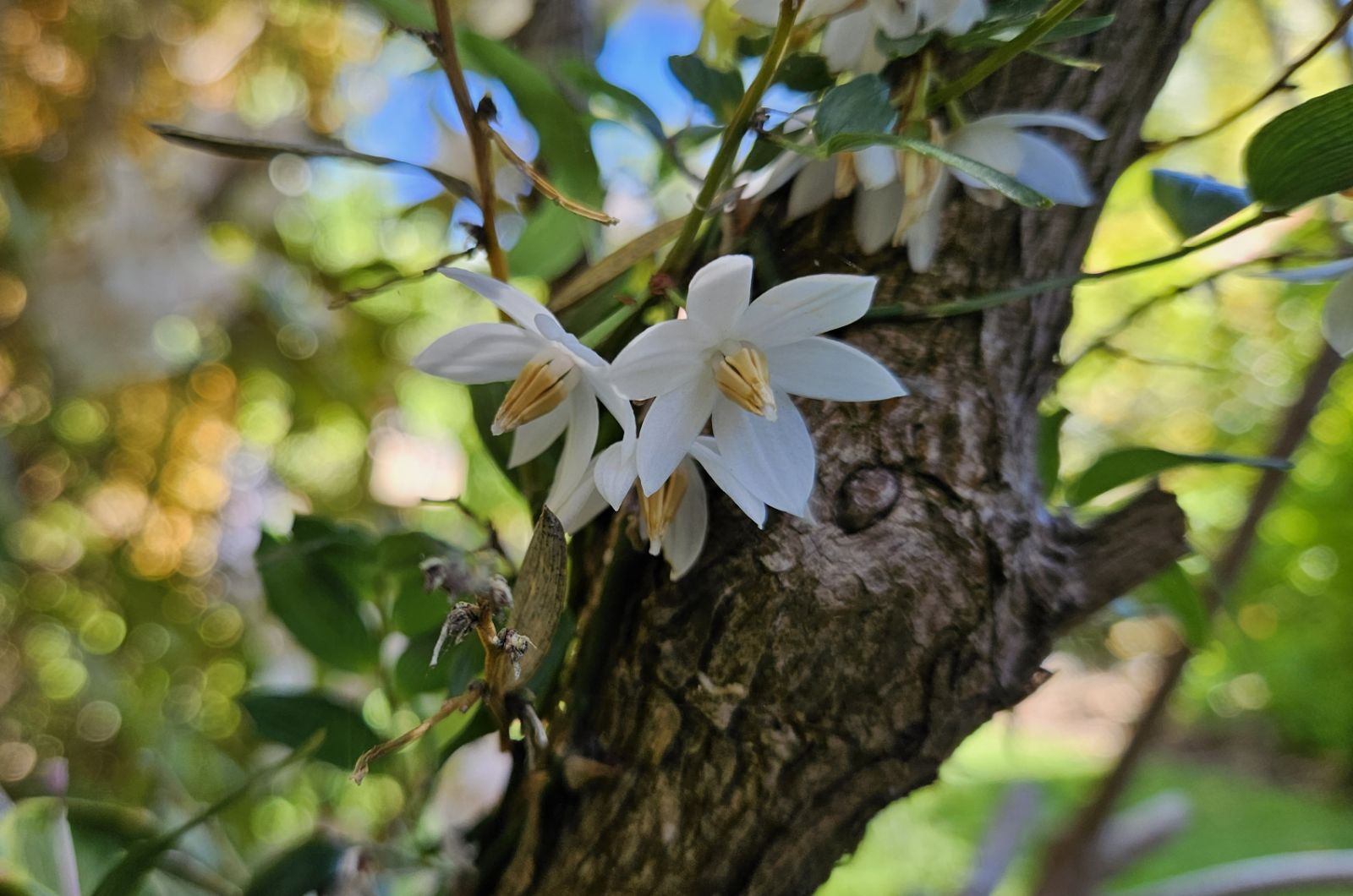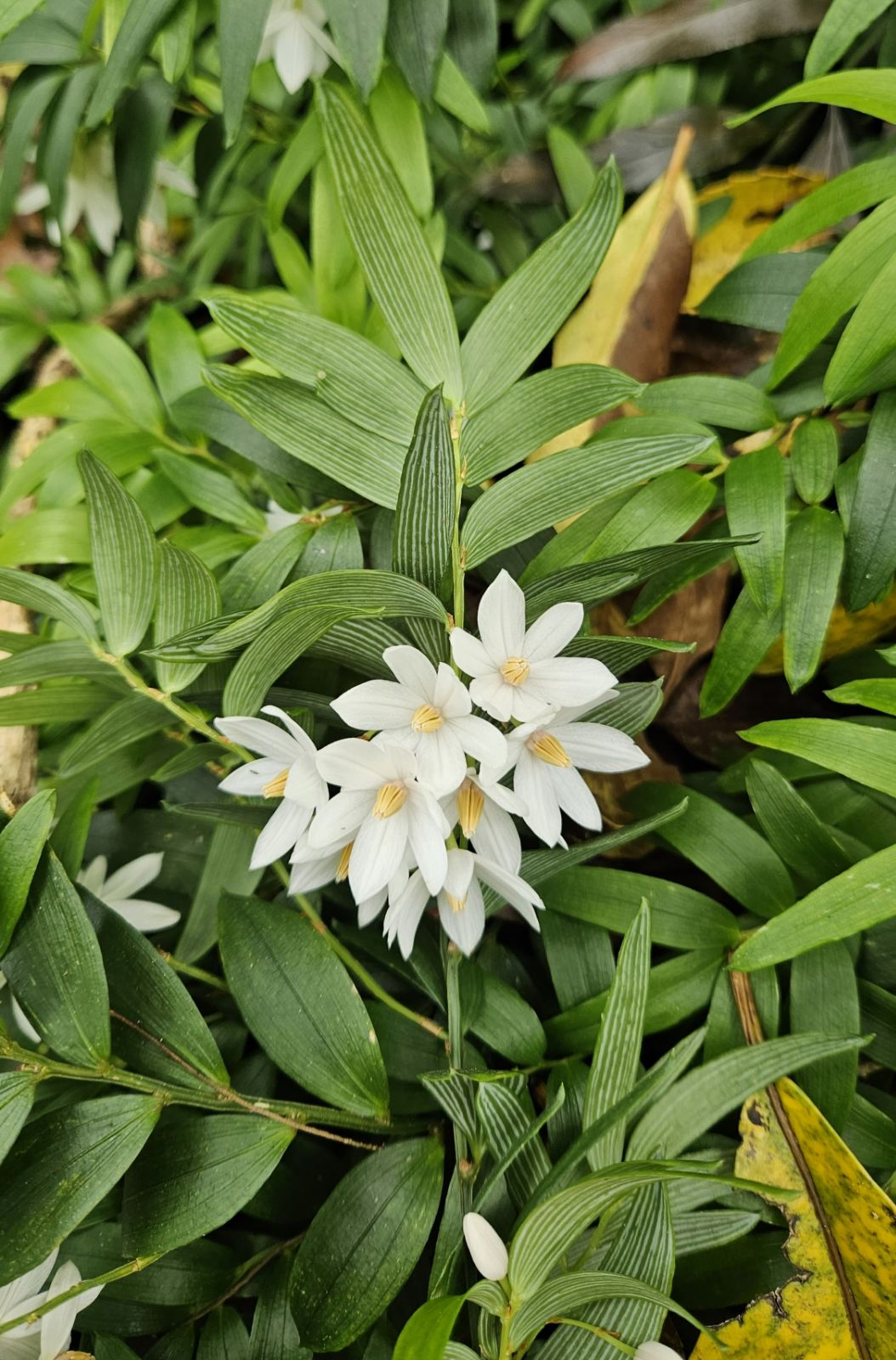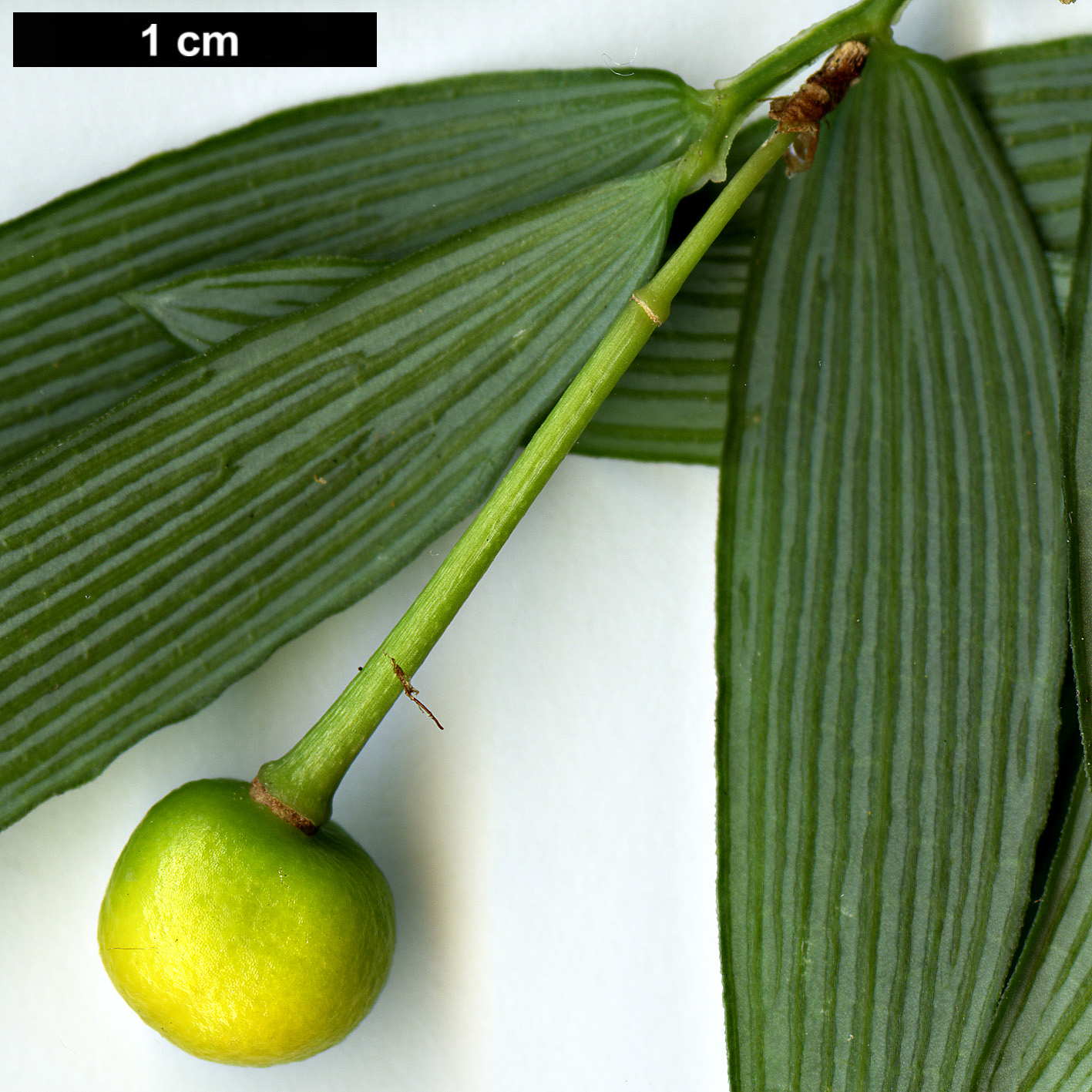Luzuriaga radicans
Credits
Article from Bean's Trees and Shrubs Hardy in the British Isles
Recommended citation
'Luzuriaga radicans' from the website Trees and Shrubs Online (treesandshrubsonline.
Genus
Other taxa in genus
An evergreen plant with perennial stems, creeping over the forest floor or climbing up the trunks of trees to a height of 6 ft or more, attached by roots springing from the joints of the stems. Its young shoots are thin, ribbed, wiry, and like the rest of the plant quite devoid of down. Leaves stalkless, set in two opposite rows, ovate-oblong, or oval to narrowly linear, tapered at both ends, 1⁄2 to 2 in. long, 1⁄8 to 5⁄8 in. wide, bright green above, rather glaucous beneath, with six to twelve distinct ribs running lengthwise. Flowers fragrant, produced singly or two or three together from the leaf-axils, each drooping on a slender stalk up to 1 in. long; they are white, 1 to 11⁄2 in. across; the six ‘petals’ 1⁄8 to 1⁄4 in. wide, pointed; anthers yellow, stalkless, forming a slender cone in the centre of the flower. Berry the size of a pea, brilliant orange or scarlet.
Native of Chile and Argentina; introduced by the middle of the 19th century, since when it has been cultivated at Kew. It is not hardy there, but can be grown out-of-doors in the milder south and south-western districts. It flowers in June in the Temperate House at Kew. Whether grown under glass or out-of-doors it should have a shaded position. It loves a peaty soil and abundant moisture. H. F. Comber, who collected it on his Chilean journey (1925–7), says it bears its flowers and fruits most freely when growing on tree trunks. Other collectors have noted that it never flowers freely when growing on the ground. It would probably succeed best out-of-doors in the mildest and rainiest parts of the British Isles, grown against the trunk of a tree or tree-fern. A damp, mossy wall might also be to its liking.













